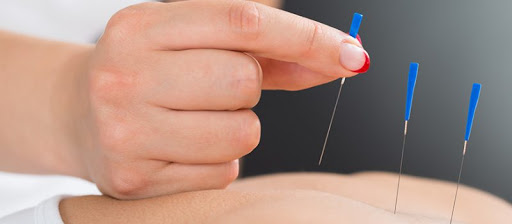Yes, these are needles for those who do not know Dry Needling is a treatment for the deactivation of a trigger point. A trigger point is those “nuts ” sore in the muscles that often impede movement and when pressed radiate along a path. The technique of Dry Needling or dry needling has the advantages that the needles act directly at the point of pain, in the case of muscle tension or when there is a deficit of movement, but you need not worry and be afraid because the application does not hurt. And the results are practically instantaneous noticed in the first service.
Dry needling is a treatment that involves a very fine needle being inserted through the skin in order to inactivate a muscle trigger point, seeking pain relief.
Dry needling of trigger points is an invasive procedure in which a fine needle or acupuncture needle is inserted into the skin and muscle.
It is intended to inactivate and treat myofascial trigger points1, which are hyper-irritable points in skeletal muscle that are associated with a palpable, hypersensitive nodule in a tight band.
Dry needling of the trigger point can be performed at the level of superficial or deep tissue, bringing relief from pain.
What is the purpose of dry needling?
The dry needling technique specifically targets myofascial trigger points. They are believed to be due to an excessive release of acetylcholine from muscle motor plaques3.
These trigger points (ie, muscle pain generators) can be divided into Active and Latent myofascial trigger points.
- Active trigger points
They can spontaneously trigger local or referred pain. They cause muscle weakness, restricted movement and autonomic phenomena. - Latent trigger points
They do not cause pain unless they are stimulated. They can alter the patterns of muscle activation and contribute to decreased range of motion.
Trigger point formation
The formation of trigger points is caused by the creation of a tense band (contracture) in the muscle. This band is caused by the excessive release of acetylcholine from the motor end plate combined with the inhibition of acetylcholinesterase and an increase in nicotinic acetylcholine receptors4.
Initially tense bands are produced as a normal protective physiological measure in the presence of actual or potential muscle damage. It is believed that they occur in response to unaccustomed eccentric or concentric loads, sustained postures and repetitive low-load stress. However, when maintained, they contribute to sustained pain5.
The pain caused by trigger points is due to hypoxia and decreased blood flow within the trigger point. This leads to a decrease in pH, which activates muscle nociceptors to restore homeostasis. This causes peripheral sensitization.
Trigger points are also involved in central awareness. The mechanism remains uncertain, but the trigger points maintain nociceptive entry into the dorsal horn and, therefore, contribute to central sensitization.
In other words, the trigger points are painful when pressed and can create pain in another area as well, which is called referred pain. It can even generate something called hyperalgesia, which is an increased sensitivity to pain and which is often the result of damage to nociceptors or peripheral nerves6.
For example, trigger points on the shoulder, neck and face muscles are a common source of headaches because the trigger point refers to pain in the head. According to research published in Current Pain and Headache Reports, muscle overtraining or direct trauma to the muscle can lead to the development of trigger points7.
Trigger points can develop during occupational, recreational or sports activities when the use of muscle exceeds muscle capacity and normal recovery is disrupted.
Discover more from Pilates All Ages
Subscribe to get the latest posts sent to your email.
